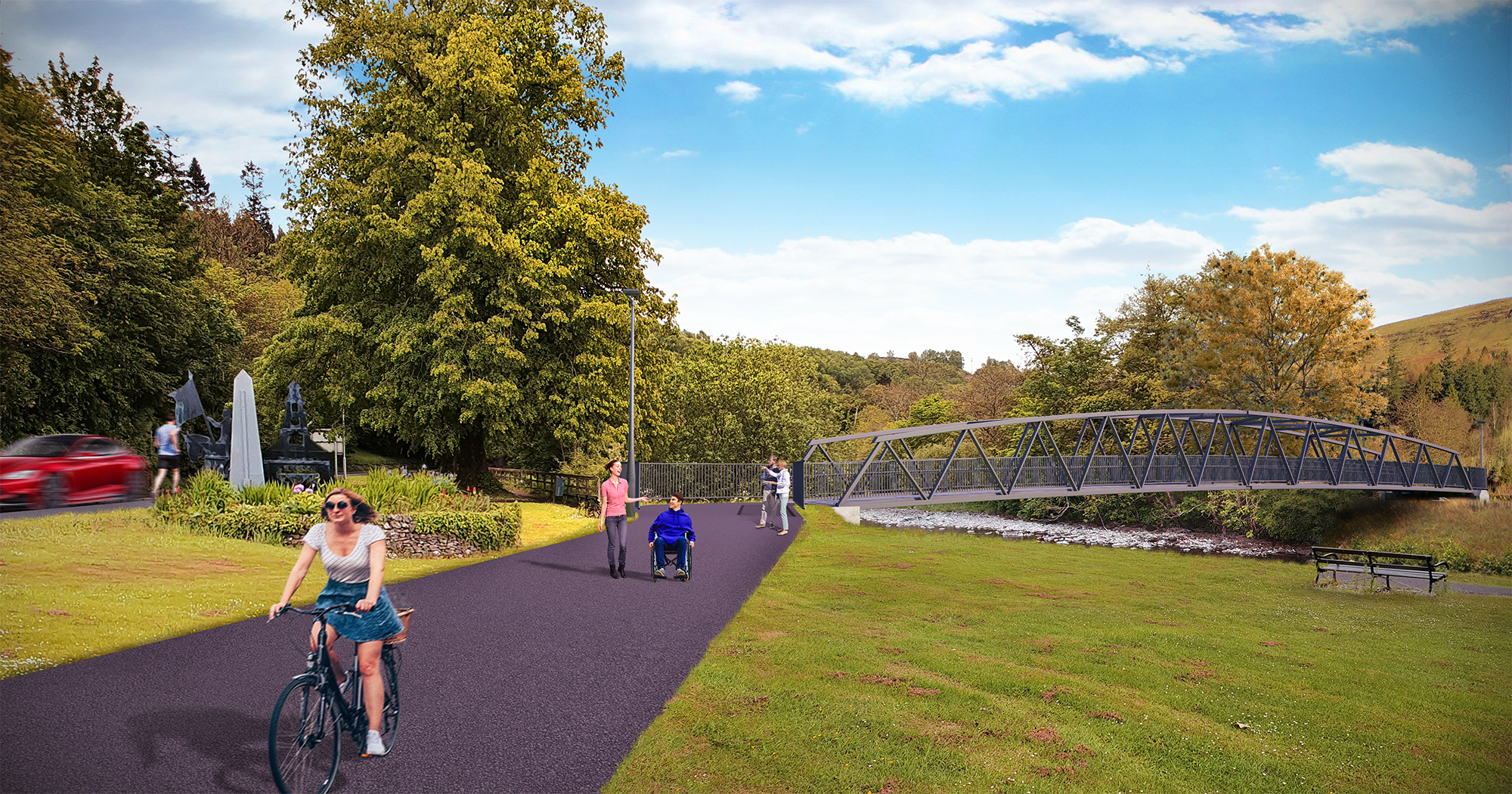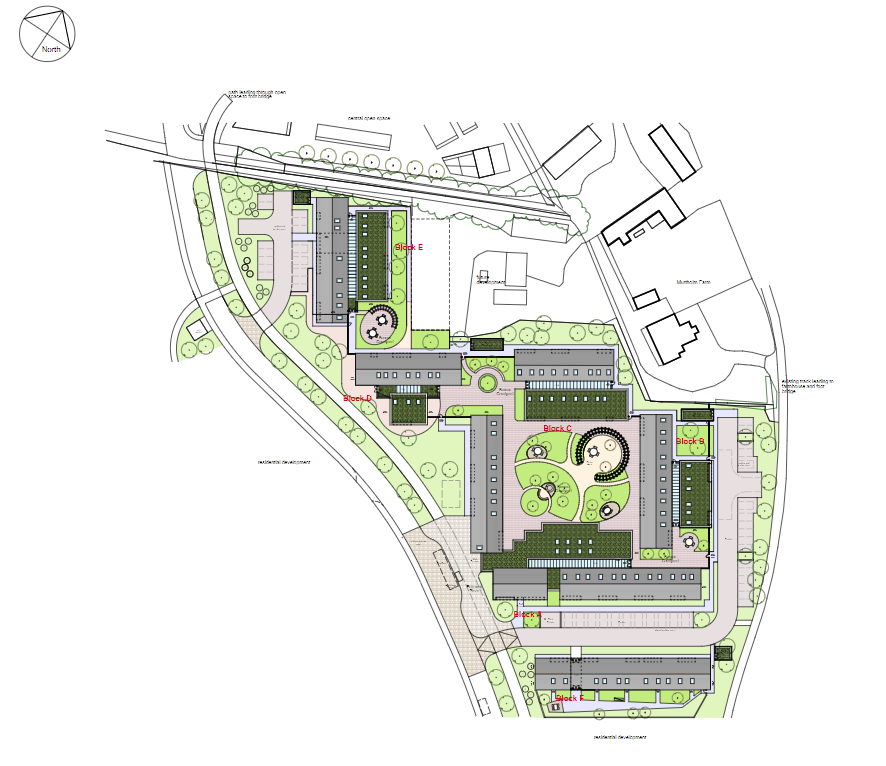Pioneering Langholm housing development moves a step closer

The bridge viewed from Langholm
Works will begin next week as Loreburn Housing Association gets the first stage of a flagship development for Langholm, Dumfries and Galloway underway.
The first phase of housing will see 35 ‘extra care’ units being built. The scheme design features bungalows around a centralised community and support space, making it an alternative to the more familiar flatted extra care development.
The high-quality, technology-enabled homes will offer superior-sized homes for independent living with access to care and support on site. With exceptional energy efficiency and meeting Loreburn’s commitment to Passivhaus certification standards, the development will be the first bungalow designed extra care development for the region.
The design arrangement will incorporate sensory and accessible outdoor space and was a considered choice to meet modern space and design standards and to design-out high service charges often seen in flatted developments.
The construction work also involves the building of a new pedestrian footbridge over the River Esk; linking the development with the town to create easy access to local facilities and to foster community links.

A site plan for the development
Graham Robertson, head of development at Loreburn, said: “The work is the culmination of four years of planning. From the purchase and detailed design process and submission of Planning applications for the enabling works, the properties, as well as the new bridge.
“The project has been a huge challenge but with the collaboration from partners we’re finally seeing our shared commitment come to fruition.”
Lorraine Usher, chief executive, added: “This will be a special and unique development for Langholm and the Esk Valley. It provides for the region’s ageing demographic and will allow people to remain in their community with reassurance that help is close by if their health and support needs change over time.
“The shift in thinking to bungalow designs for extra care takes account of changing demands and aspirations for size and space and means service charges can be kept low, making homes more affordable.”
The homes are expected to be ready for occupation by the end of 2024 with further phases of affordable housing programmed once complete.








